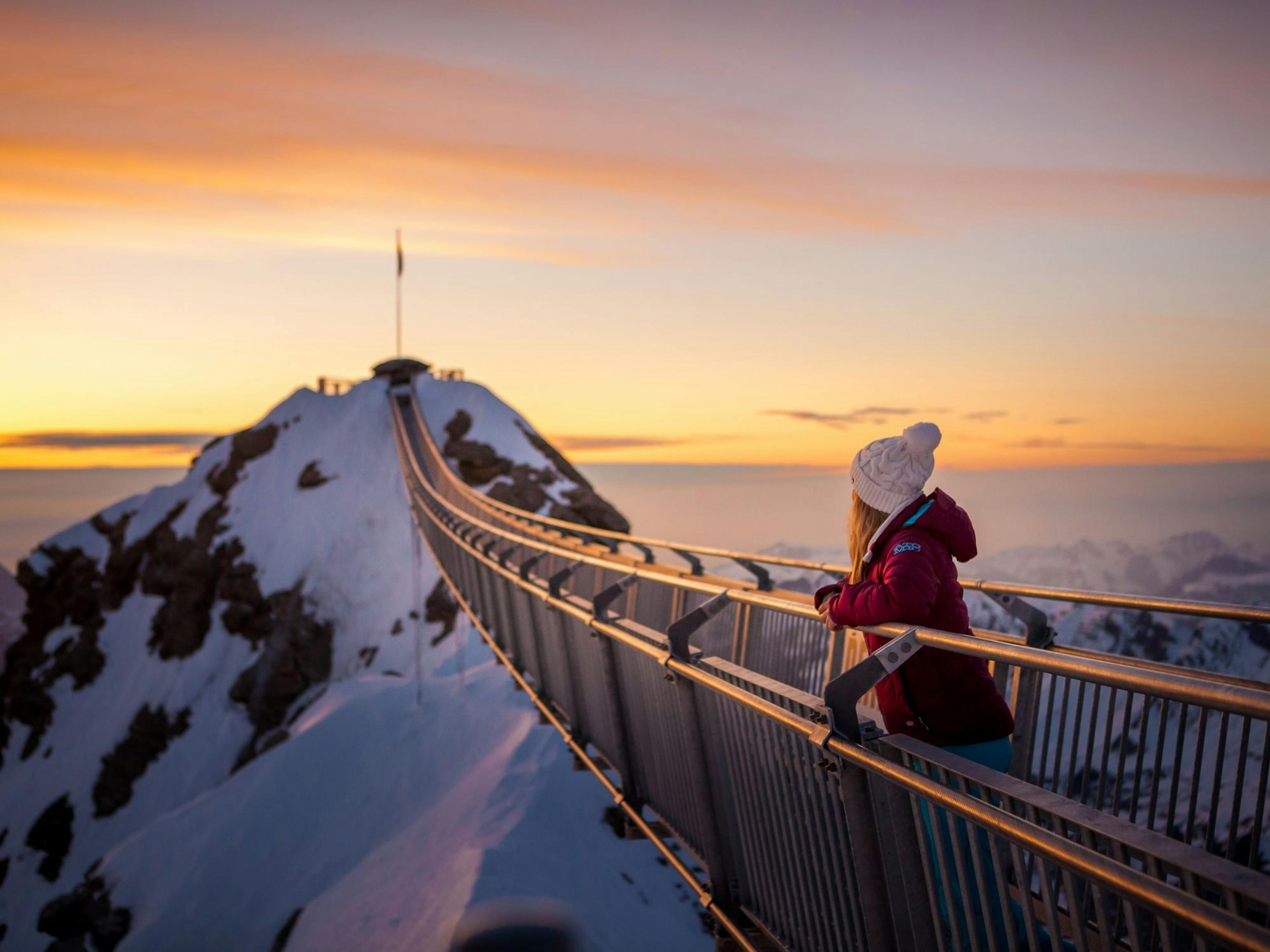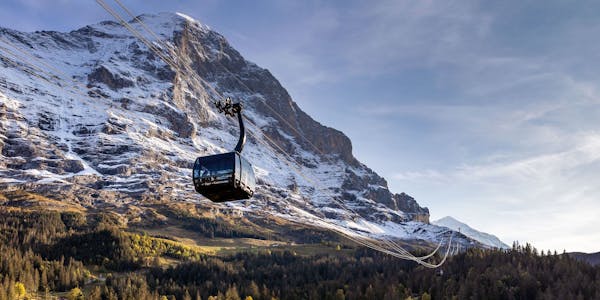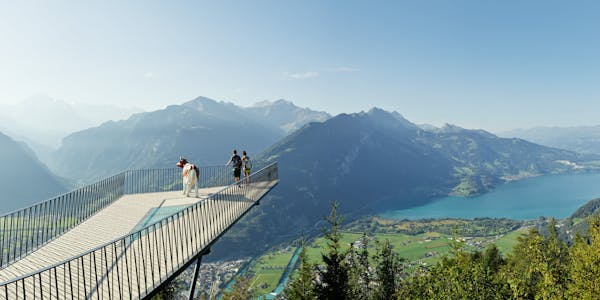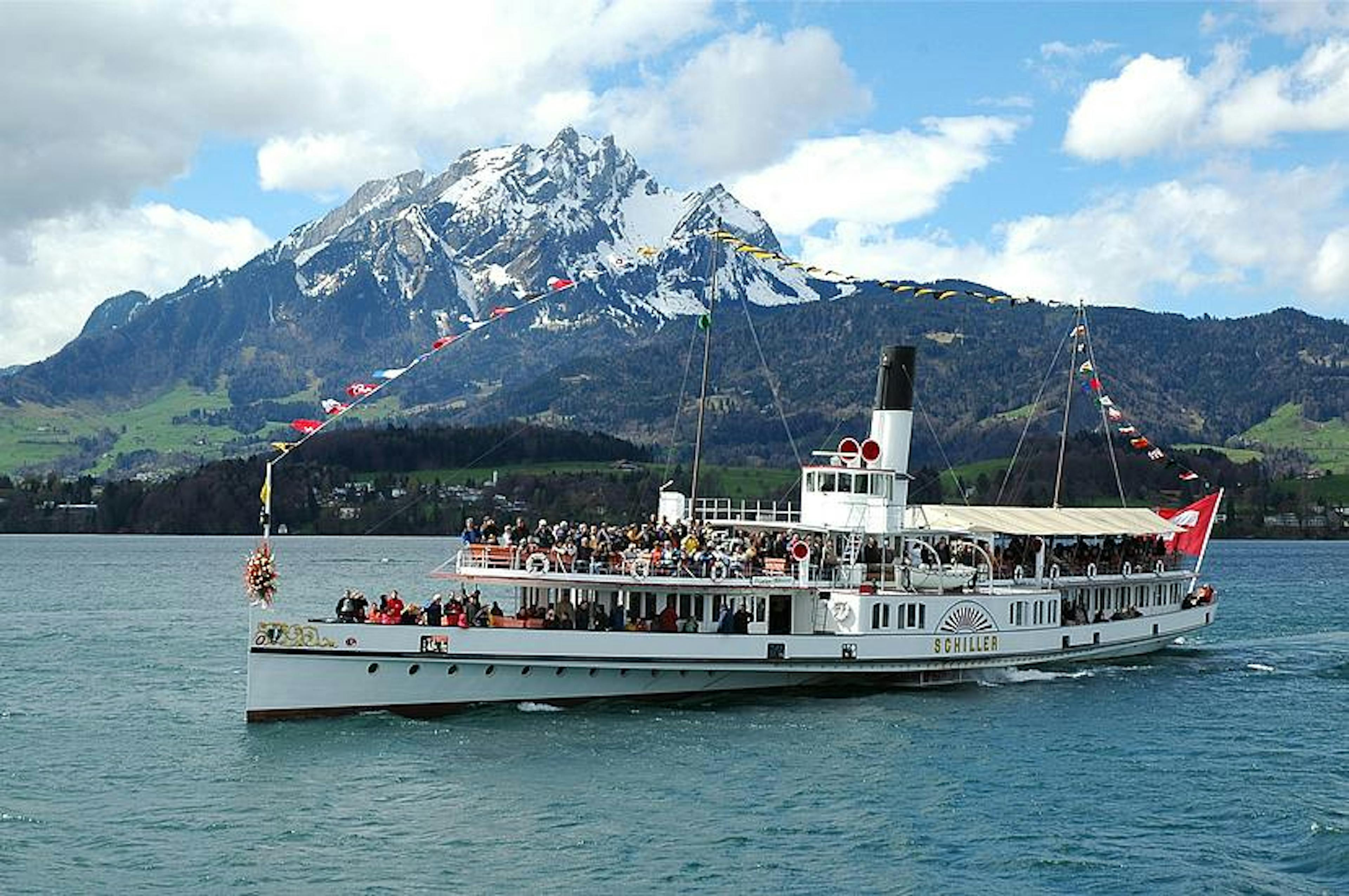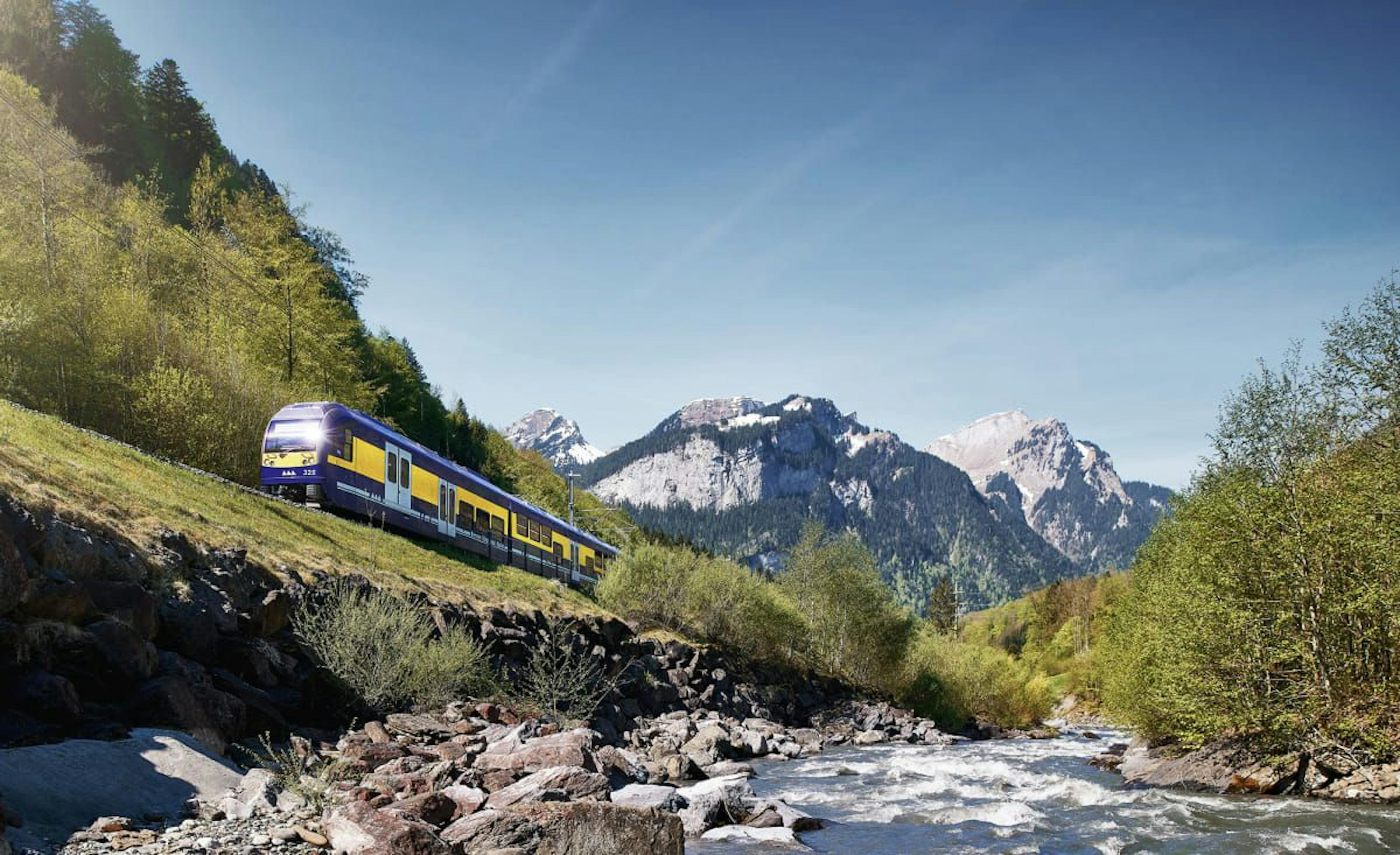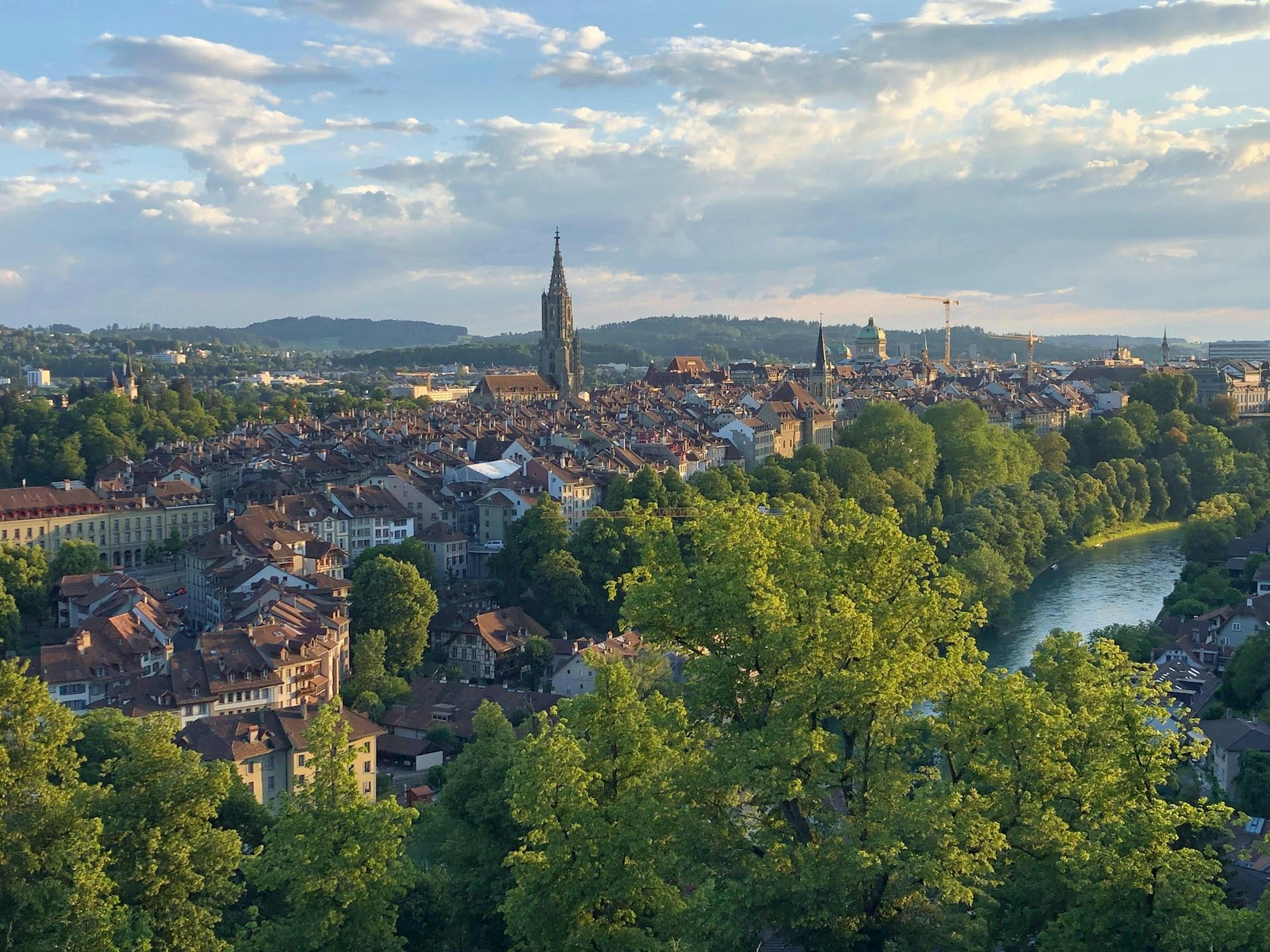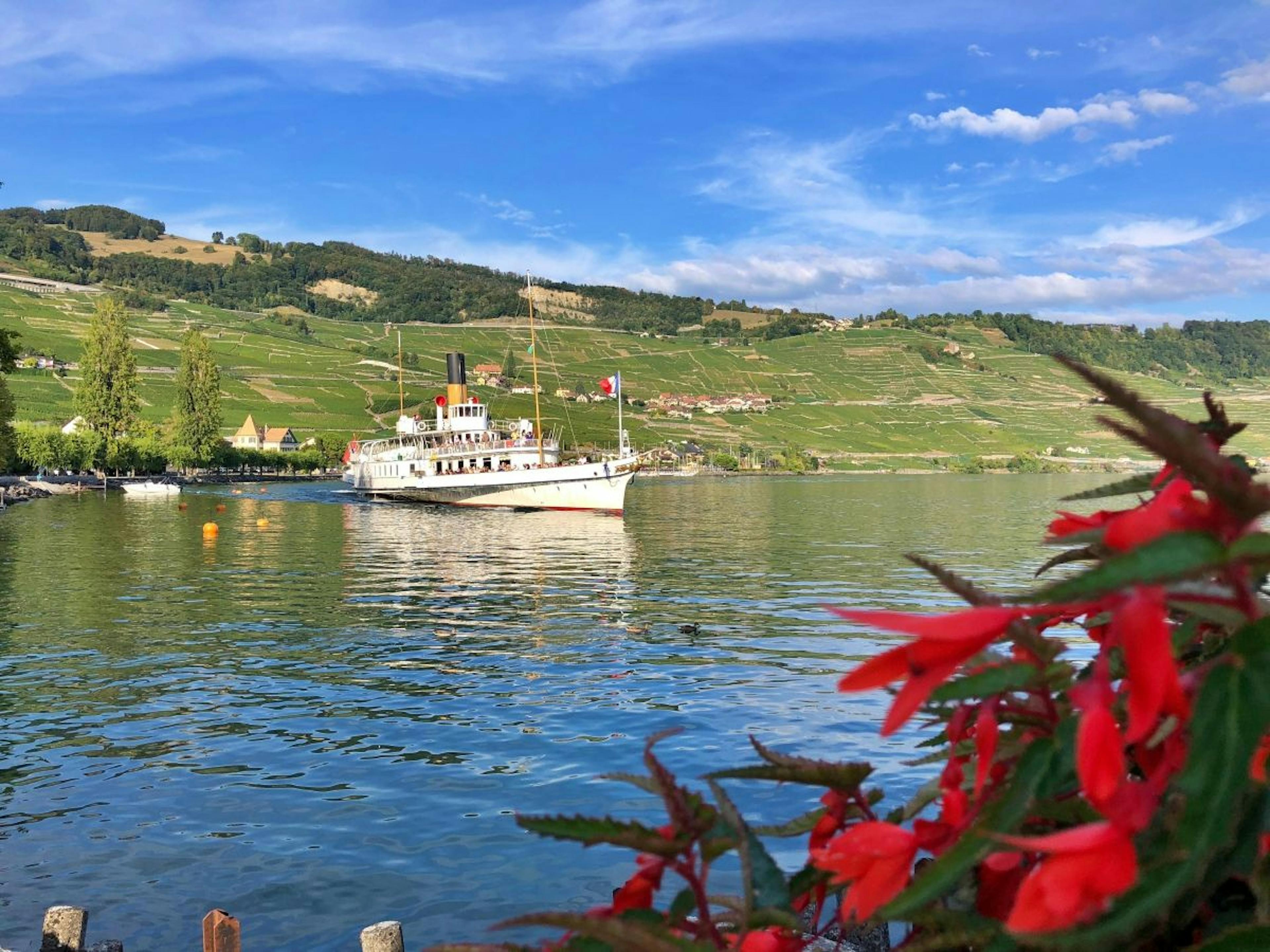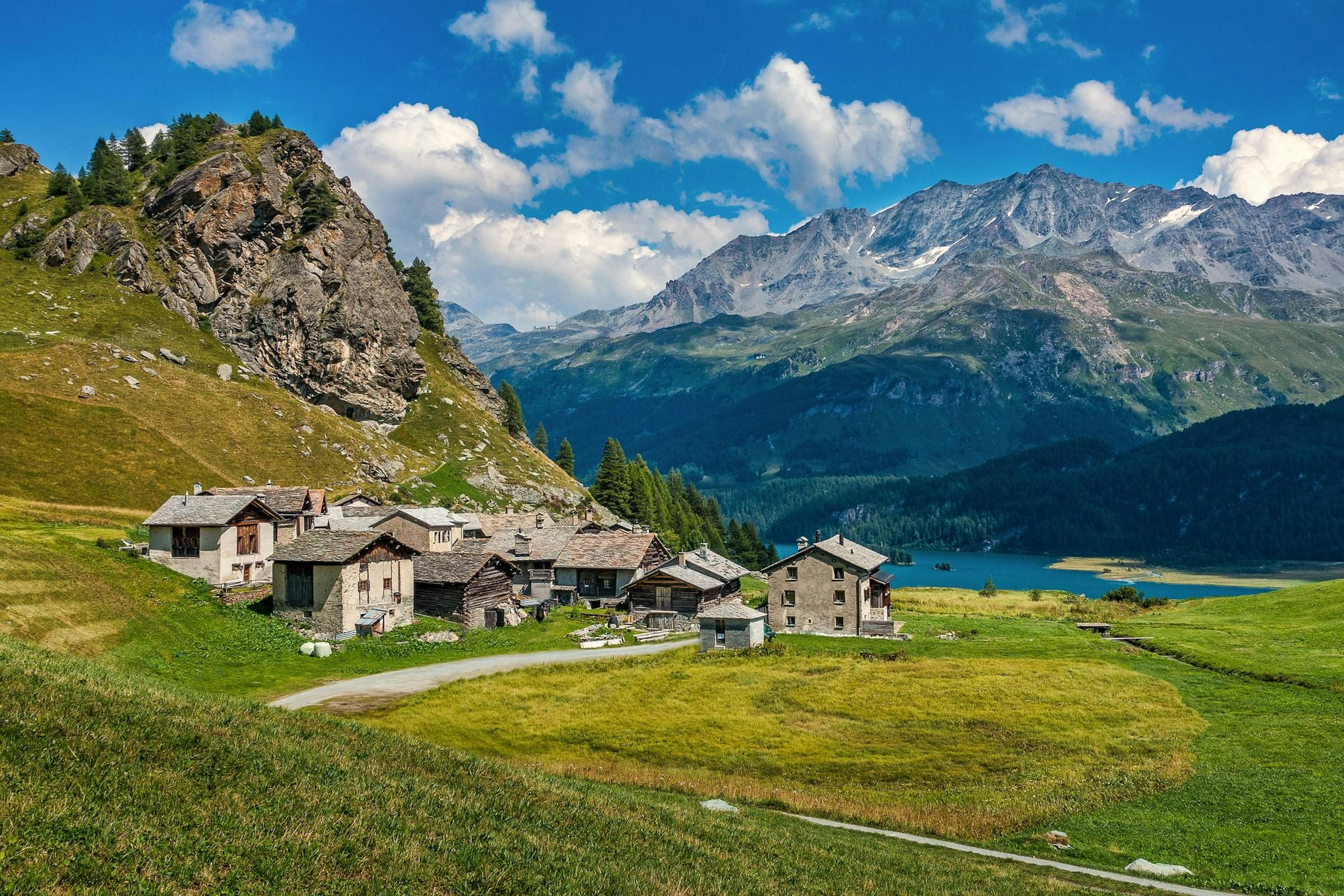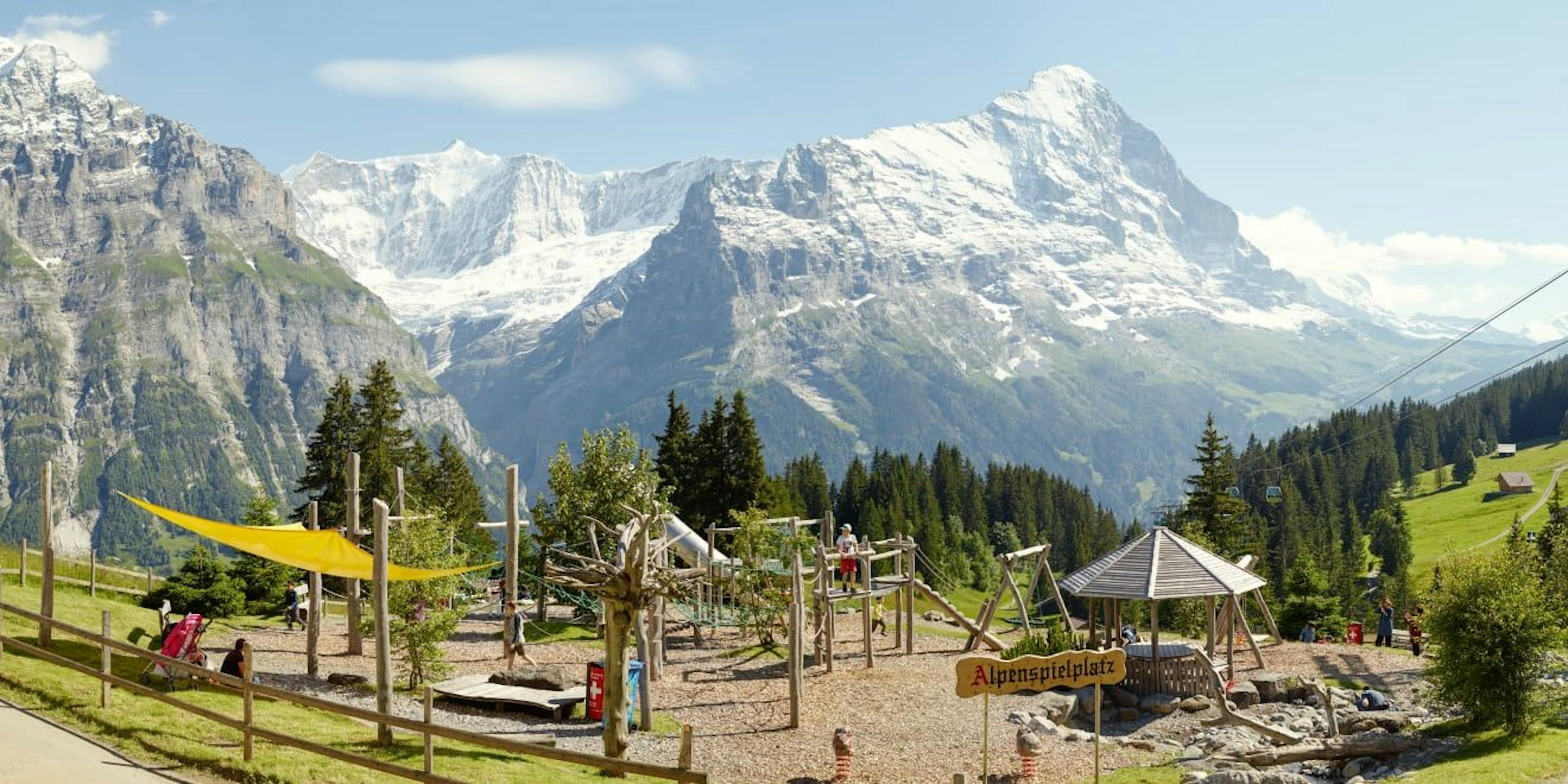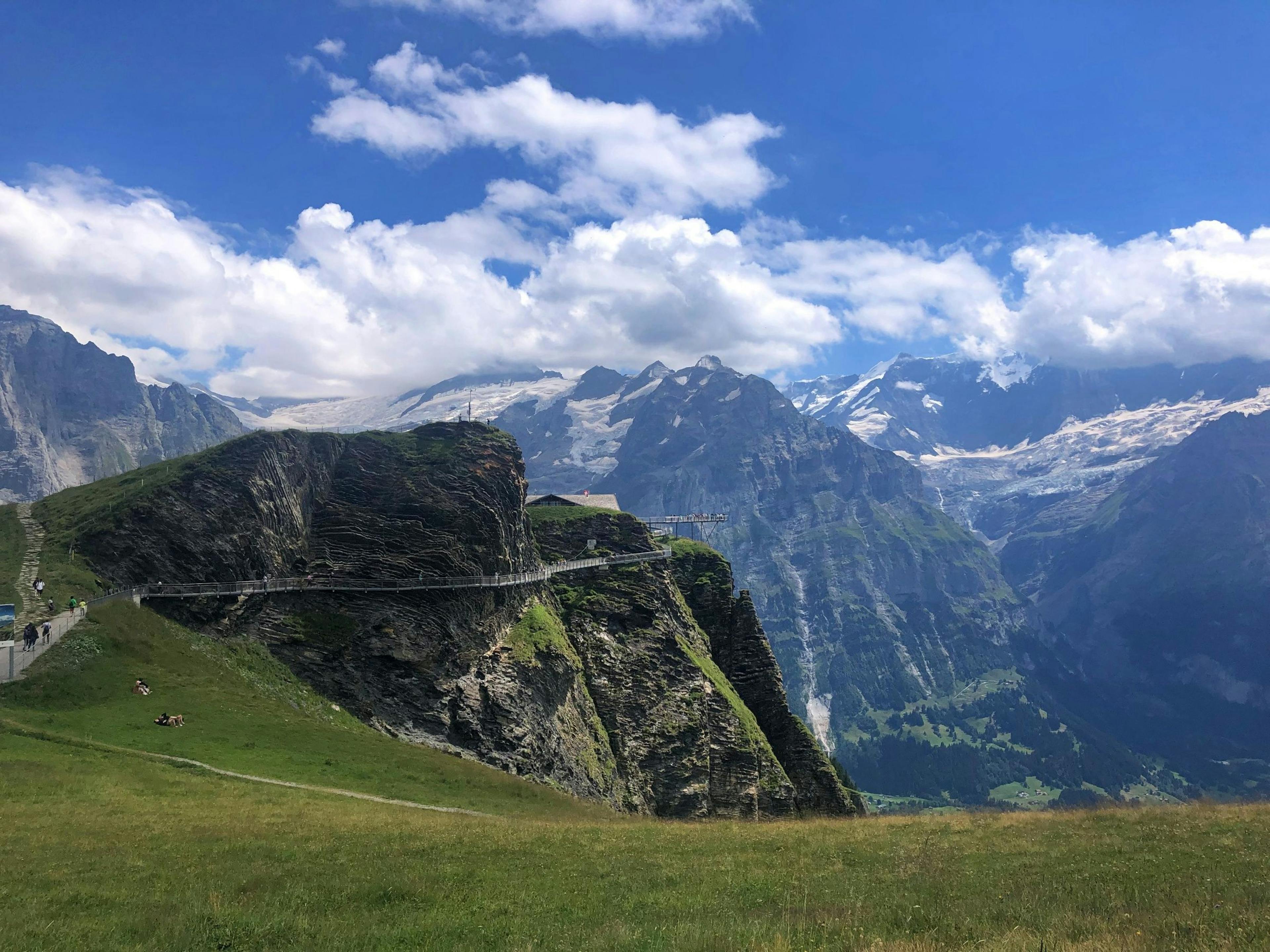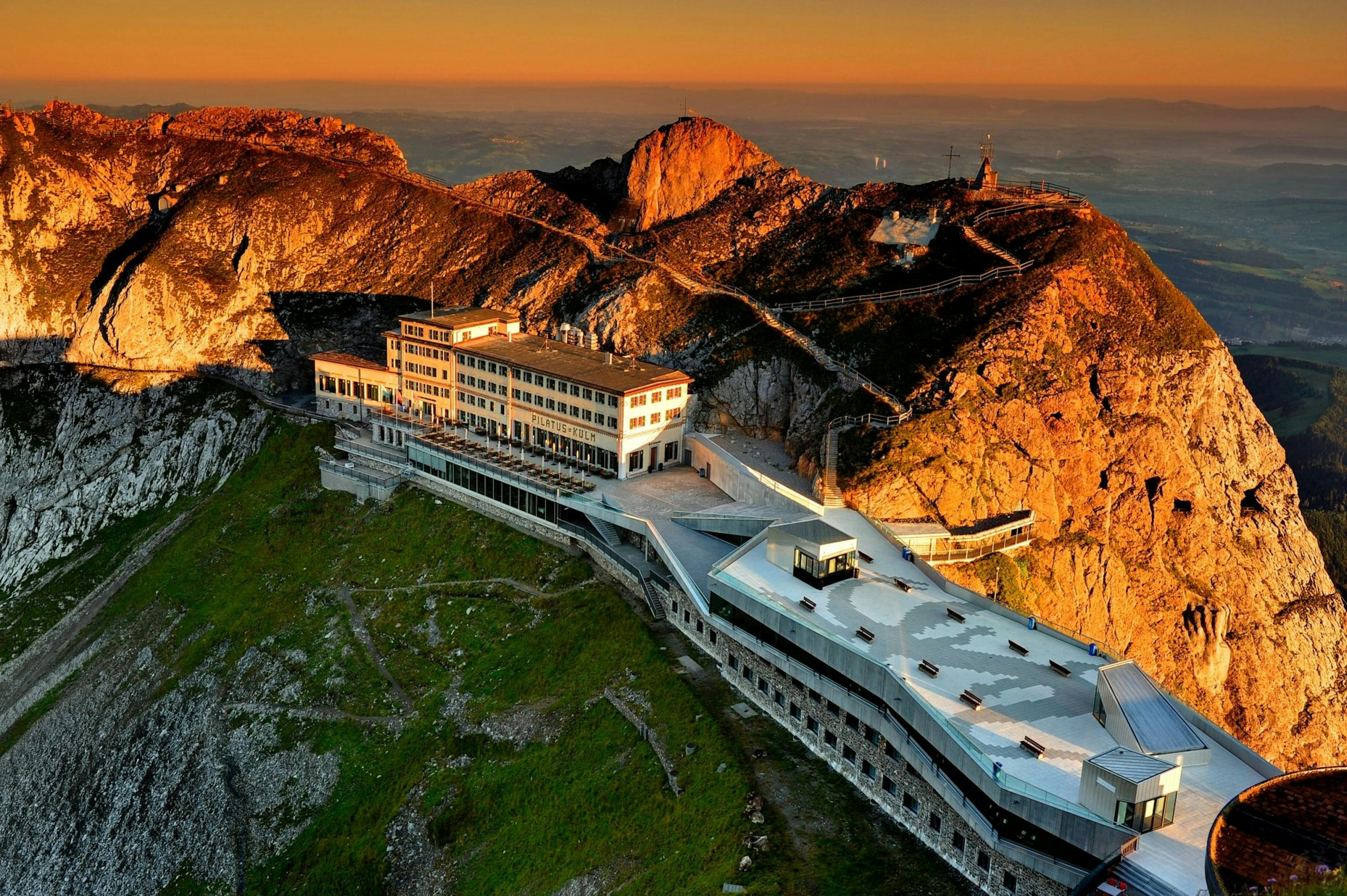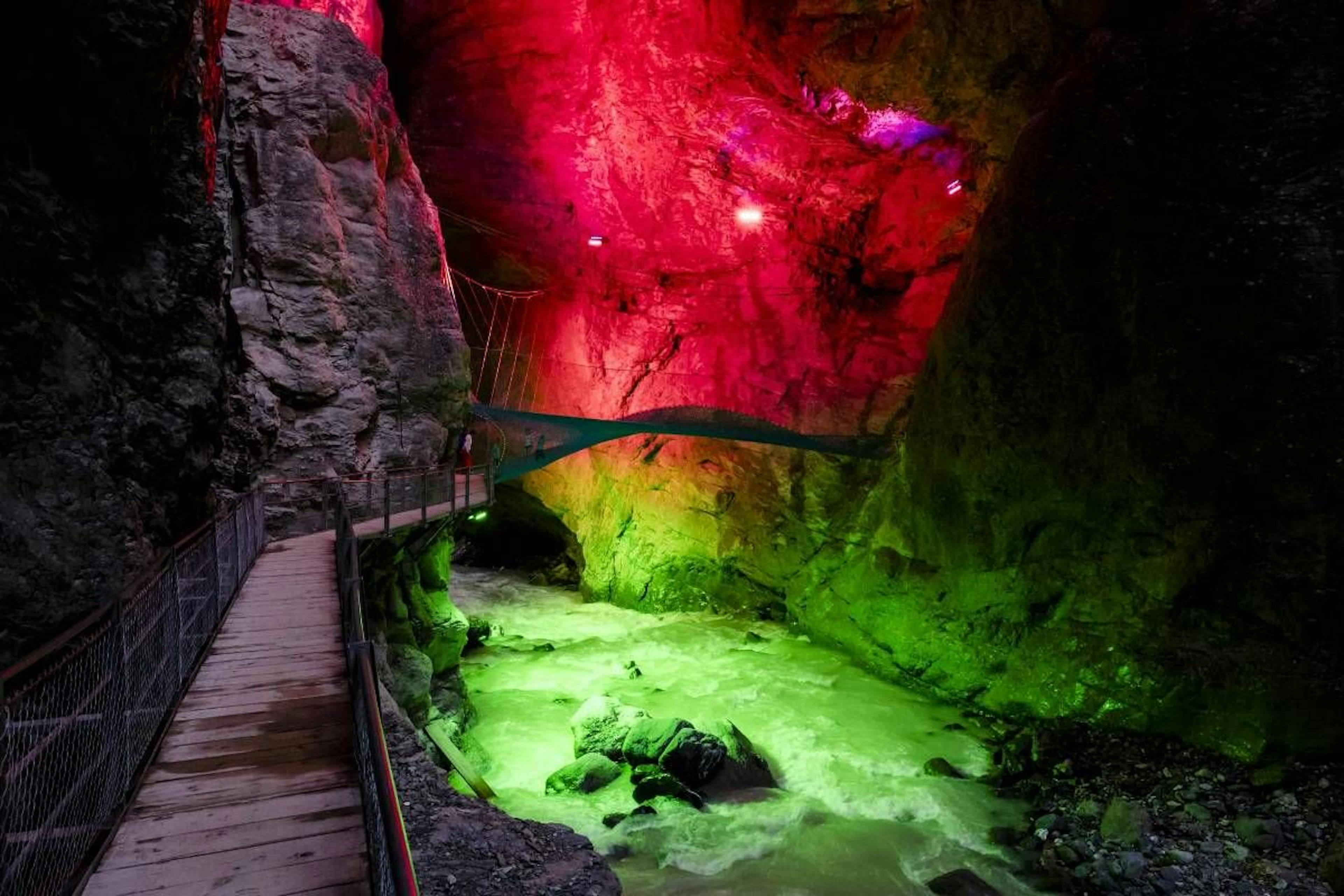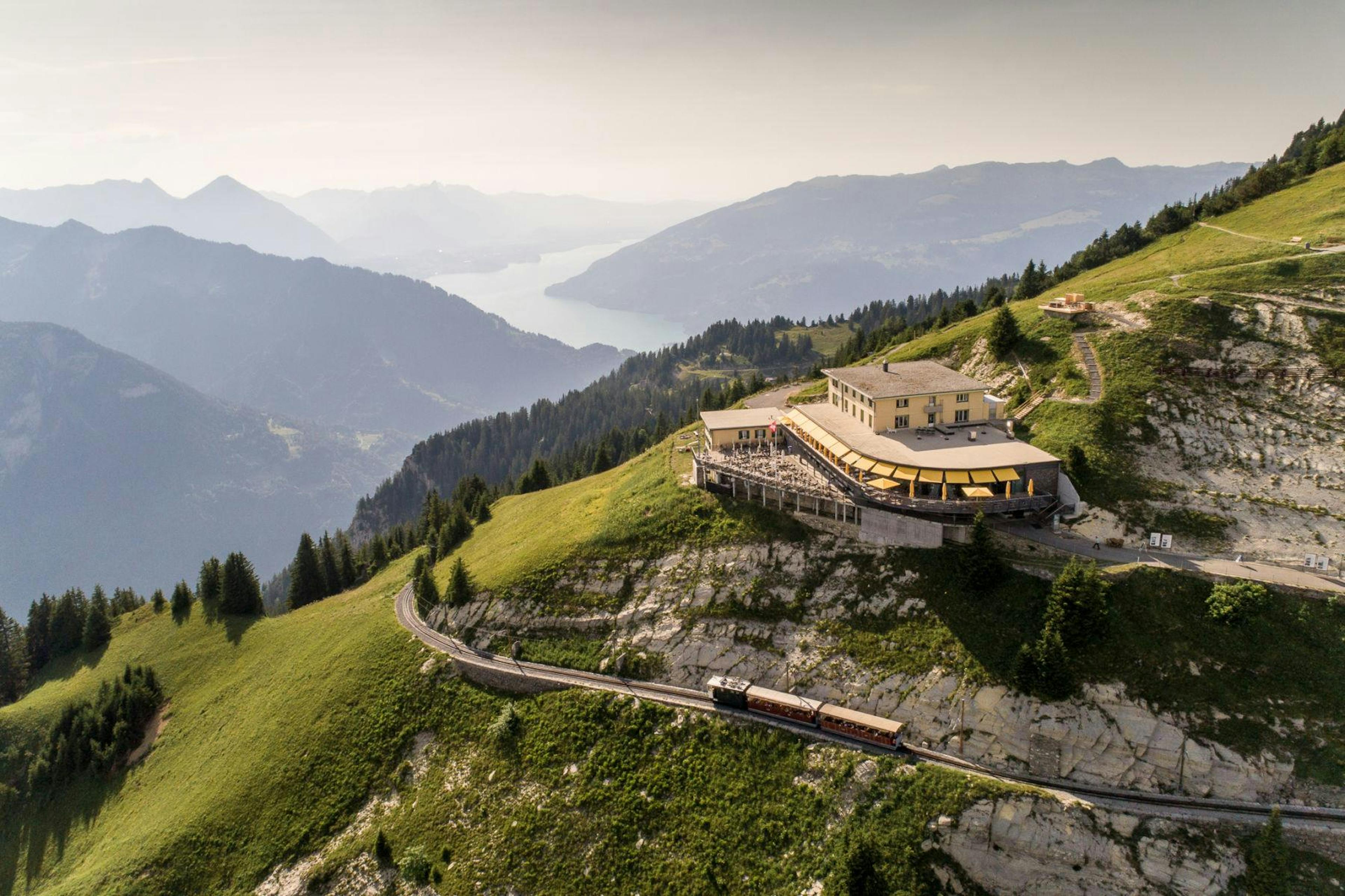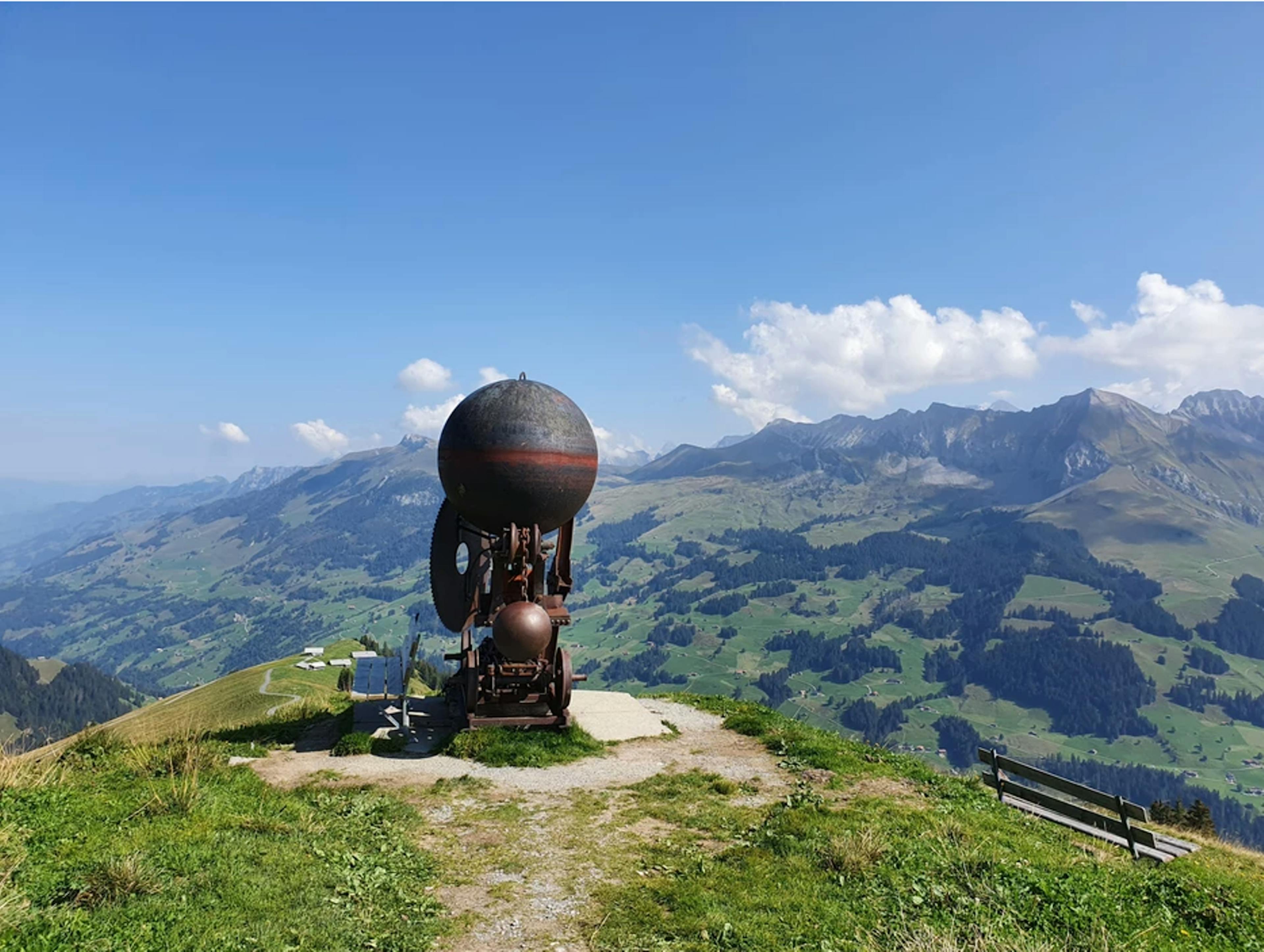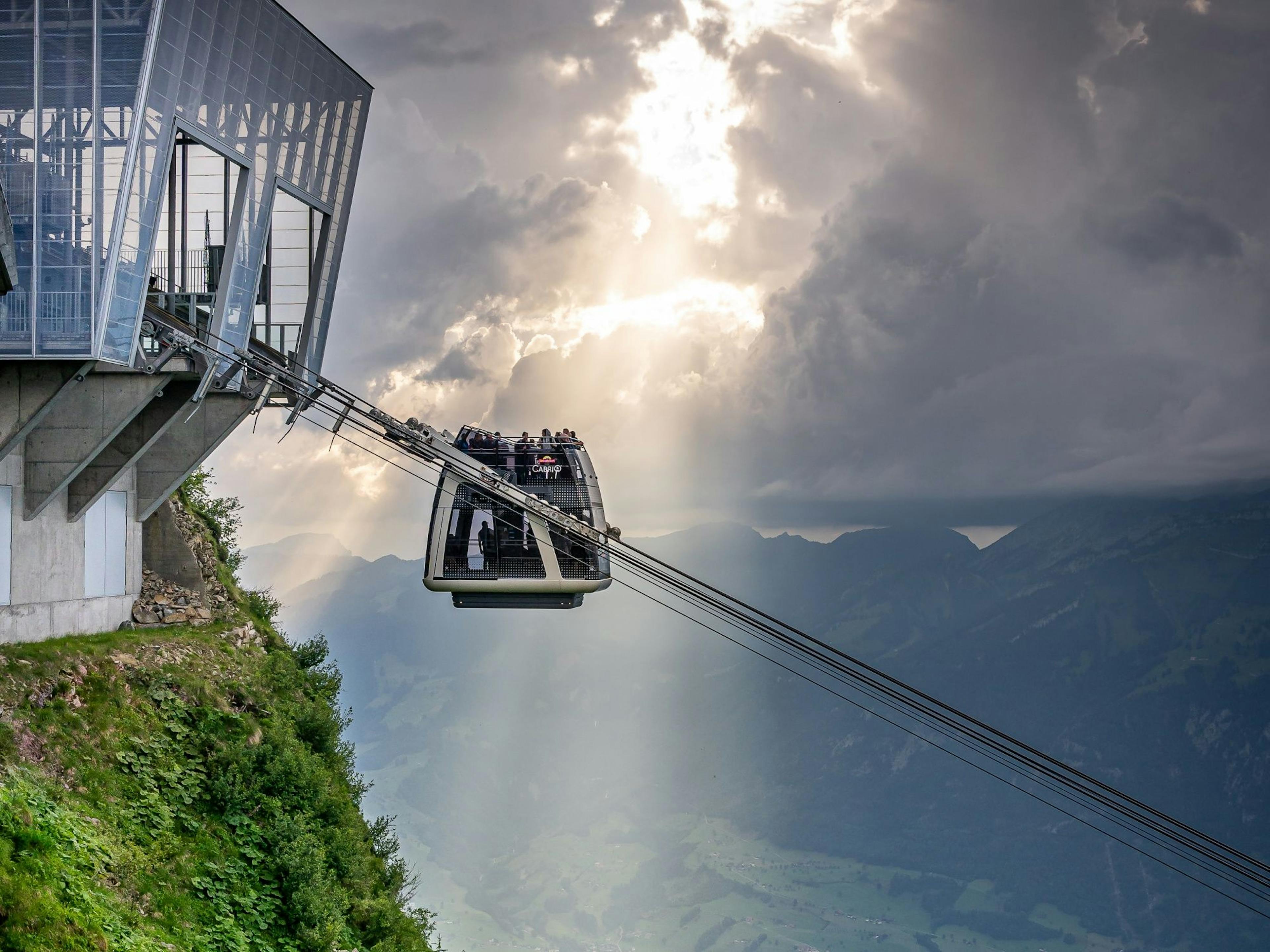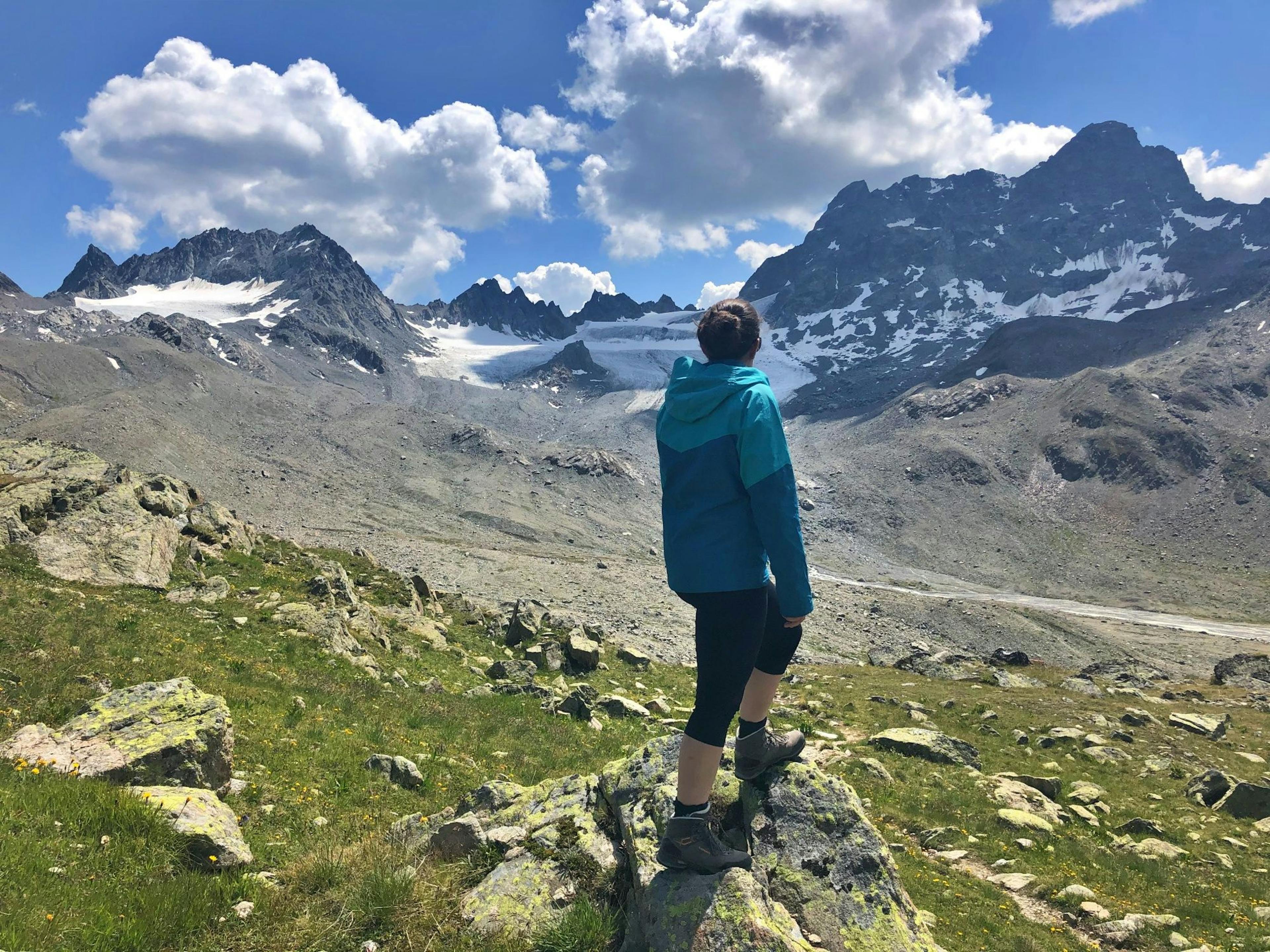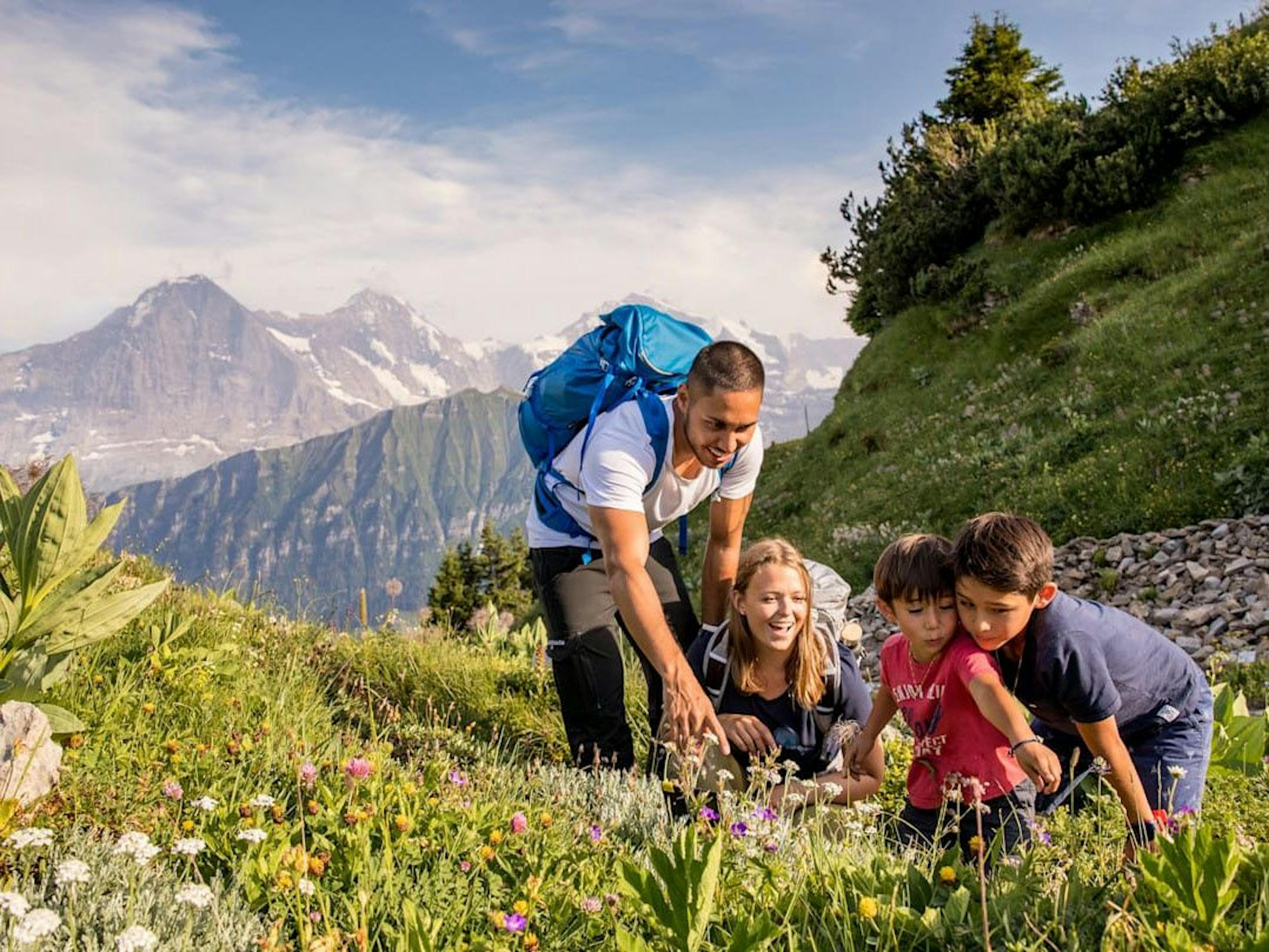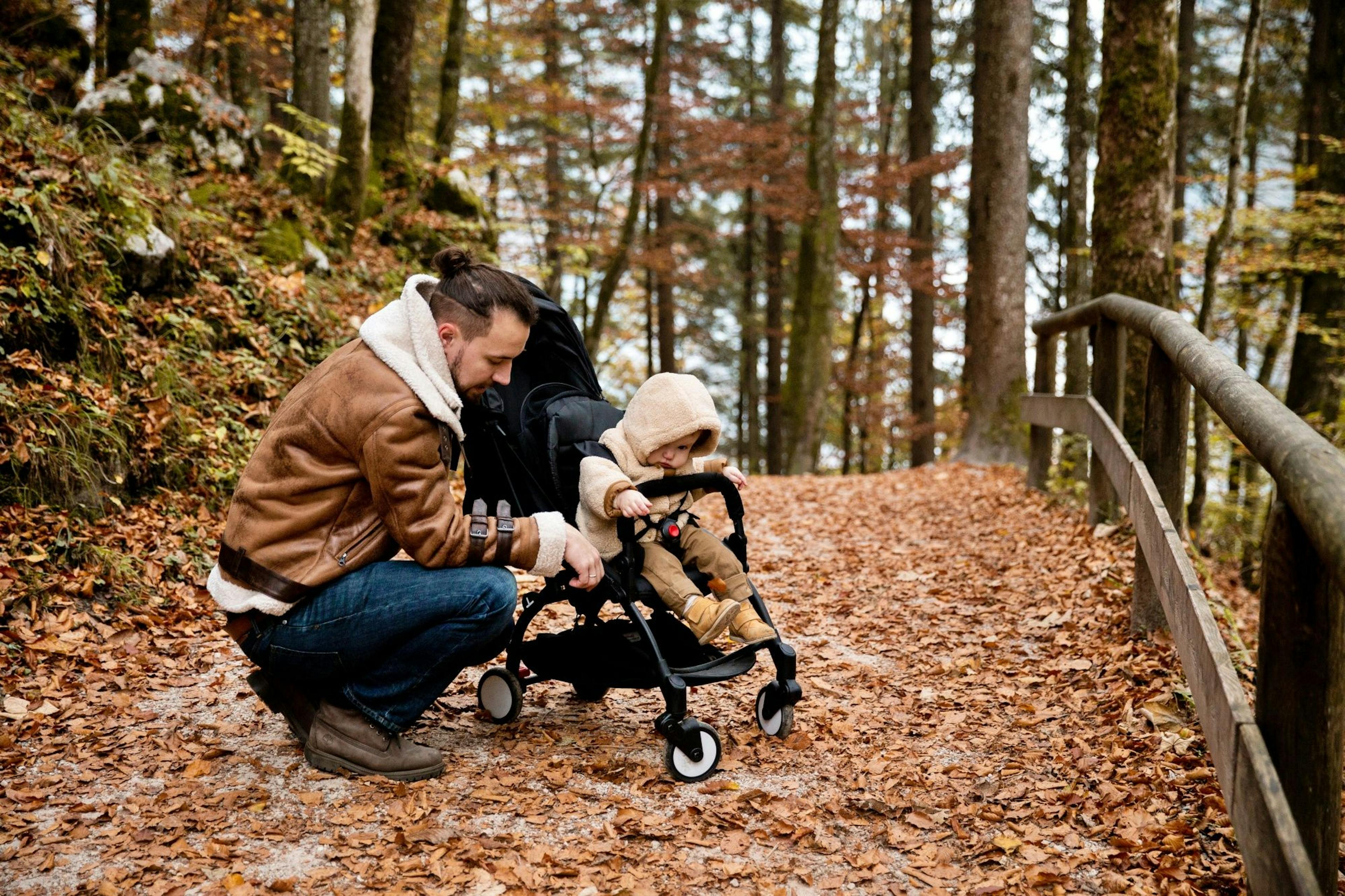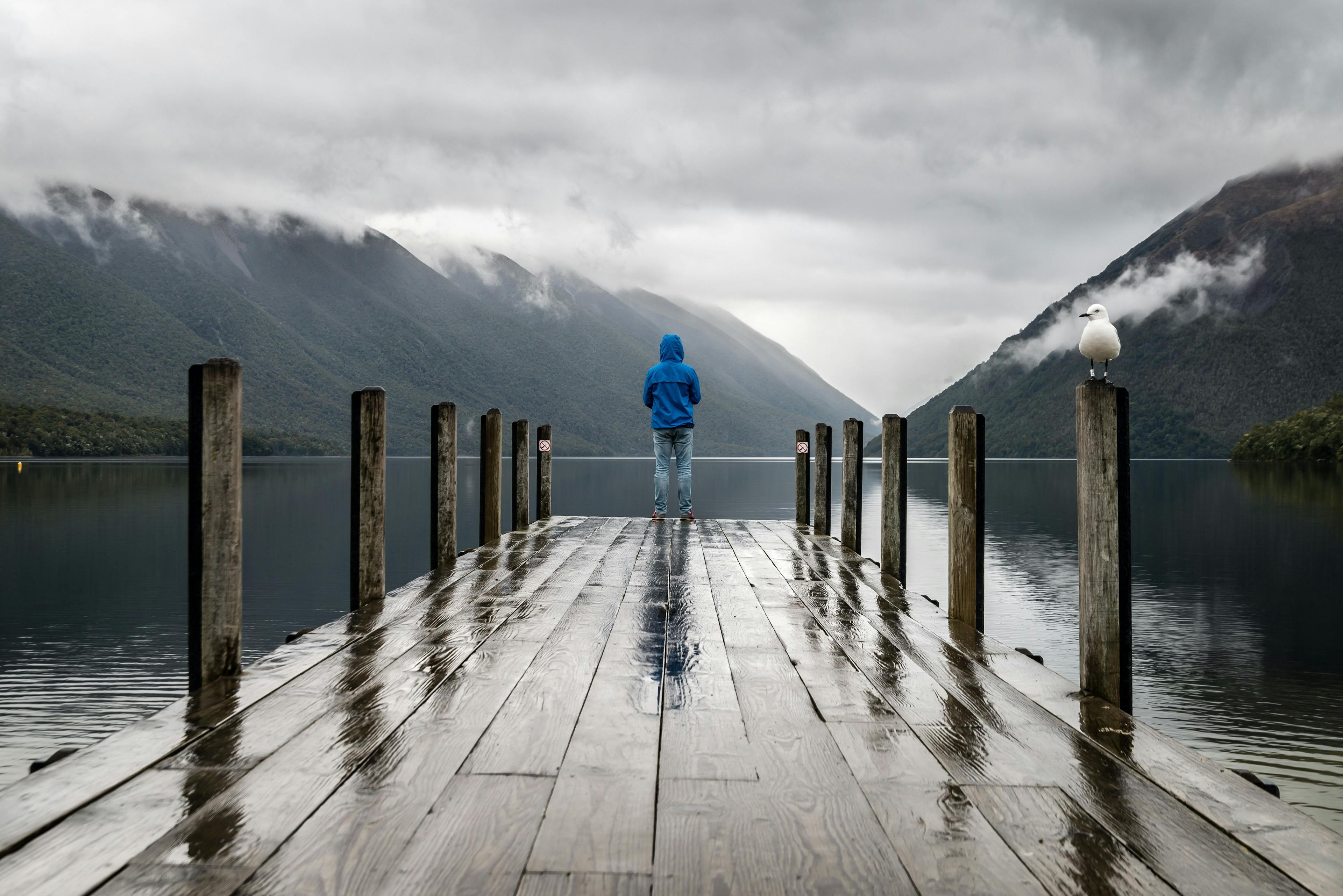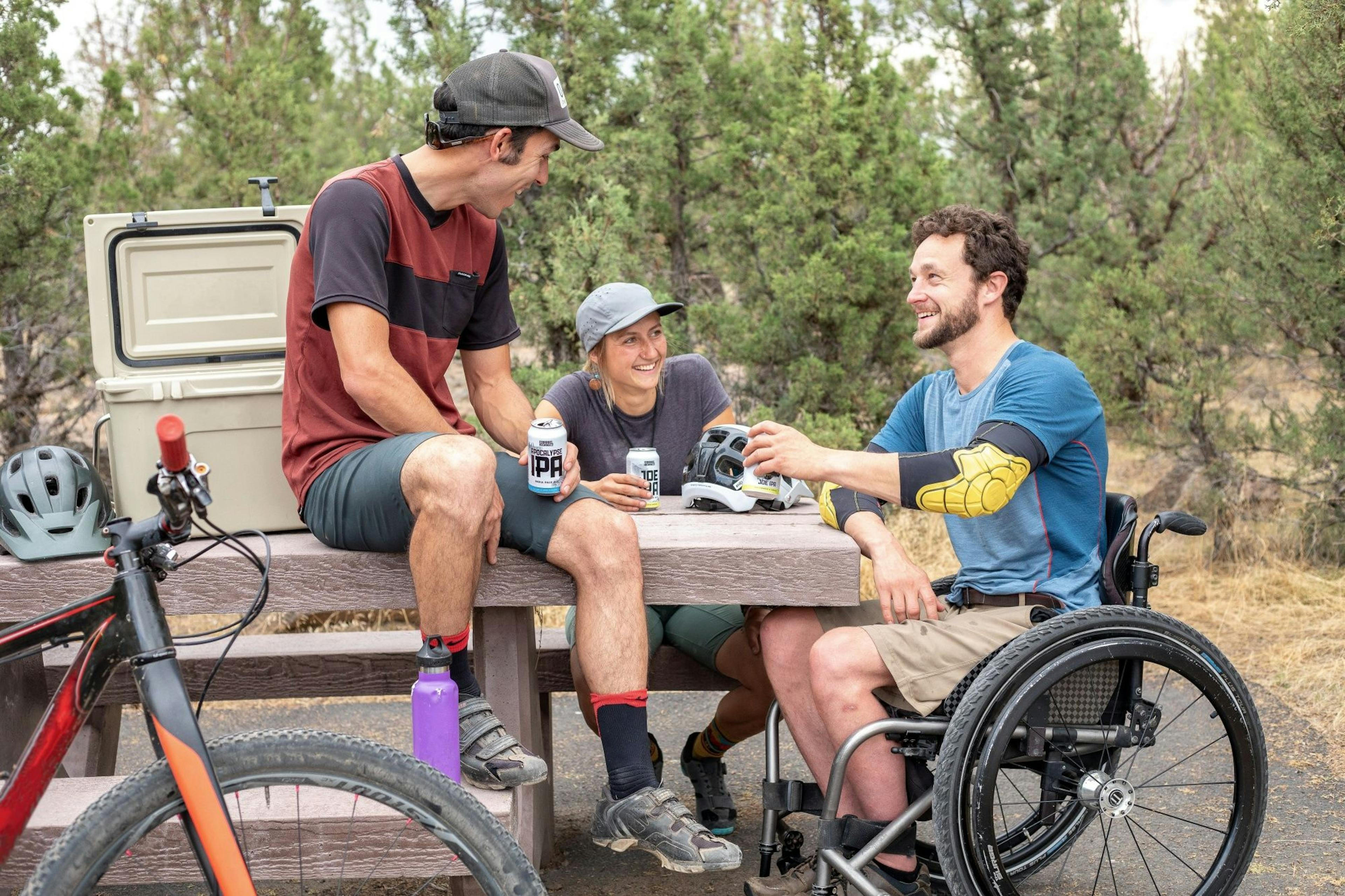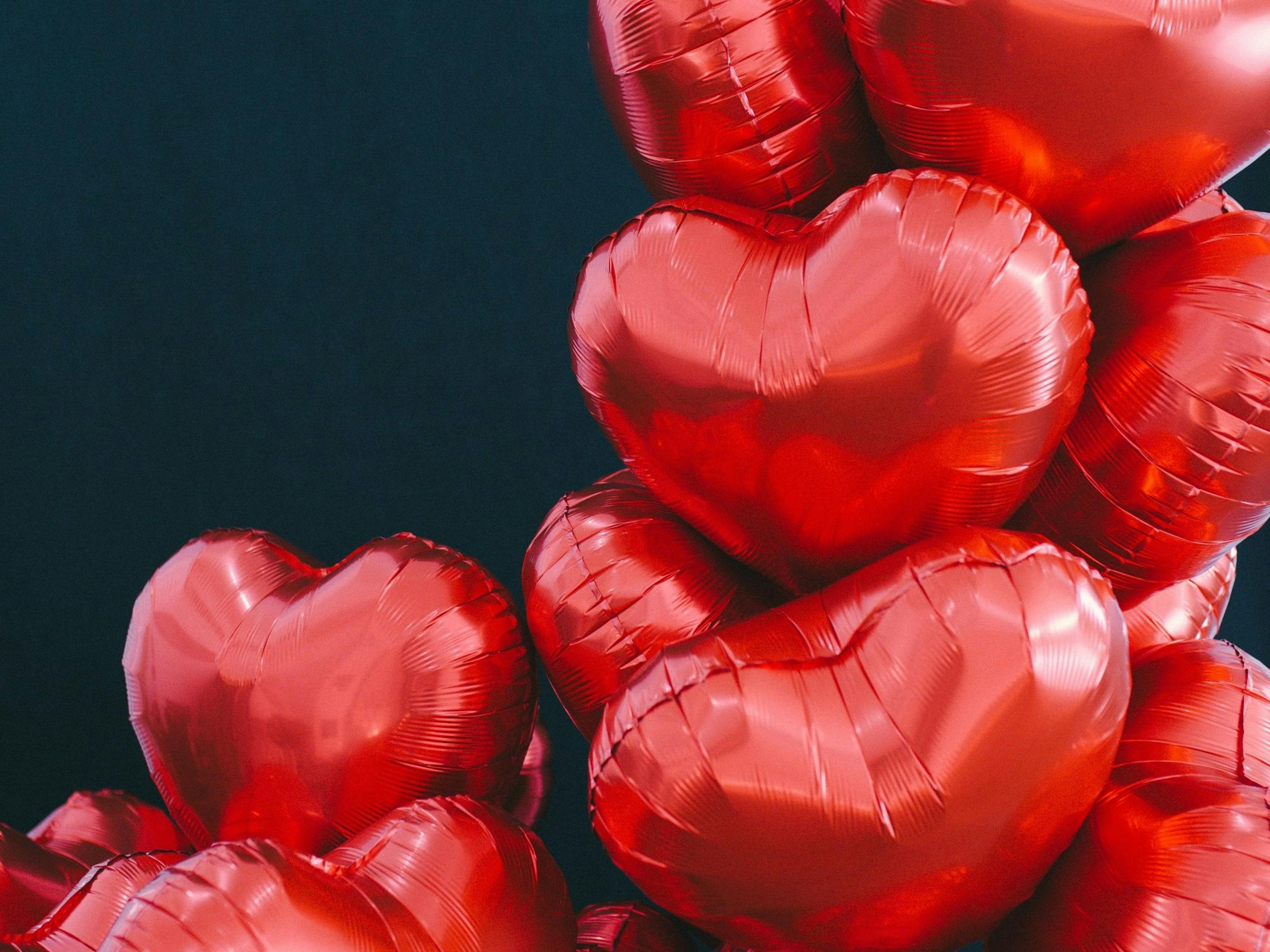
Switzerland is an extremely diverse country. Apart from sea access, you will find almost everything your heart desires here. Besides stunning landscapes for all kinds of outdoor activities all year round, you will also find medieval cities, interesting museums, historic castles and much more.
But Switzerland is also known for inventions like milk chocolate, the Swiss army knife and big banks. Don't let the manageable size of just over 40,000 square kilometers fool you. Even if you travel through the country for two weeks, you will never see everything and you will definitely not get bored.
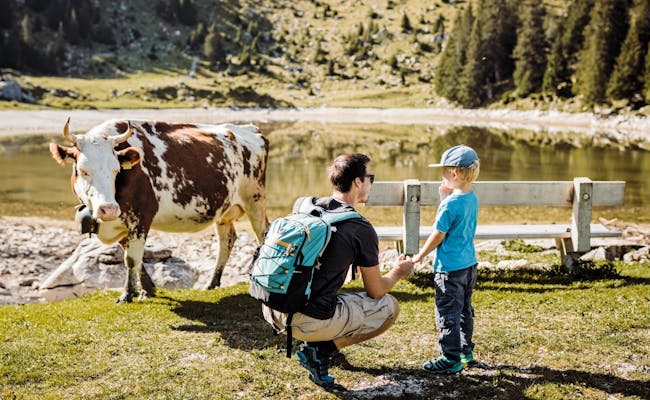 Familienausflug in den Naturpark Gantrisch (Foto: Schweiz Tourismus Ivo Scholz)
Familienausflug in den Naturpark Gantrisch (Foto: Schweiz Tourismus Ivo Scholz)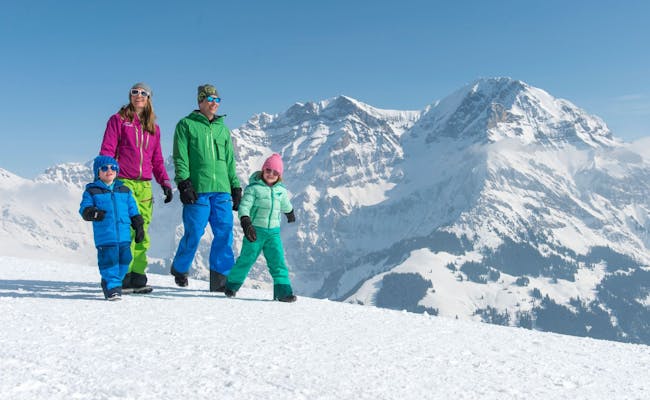 Winter in der Schweiz mit der Familie (Foto: Schweiz Tourismus Stephan Boegli)
Winter in der Schweiz mit der Familie (Foto: Schweiz Tourismus Stephan Boegli)Waters Switzerland
In total, there are over 1500 lakes in Switzerland, which means that mathematically you are never more than 16 km away from a lake. A large part of these lakes is connected by rivers, streams and canals, which reach a total length of about 61,000 km when strung together.
Numerous lakes such as Lake Constance, Lake Geneva, Lake Lucerne, Lake Thun and Lake Brienz, to name but a few, can be comfortably explored aboard a passenger ship. But Switzerland also has more than enough mountain lakes to make the storage space on your camera overflow.
On the rivers, in addition to canyoning, rafting or kayaking, one activity is especially popular: the Böötle. When the weather is nice, hundreds of inflatable unicorns and SUP boards are made river-ready and carried to the water, where they are floated down the river by the current. The most popular river to Böötle is undoubtedly the Aare. But also the Rhine, the Rhone, the Thur and many other rivers are suitable for this activity.
Switzerland spares as little with waterfalls as it does with cheeses. The Lauterbrunnen Valley calls itself "the valley of 72 waterfalls," and with the Rhine Falls outside Schaffhausen, Switzerland is home to the widest waterfall in Europe. Whether in molten, liquid, roaring, still or flowing form, Swiss waters are a joy to visit year-round.
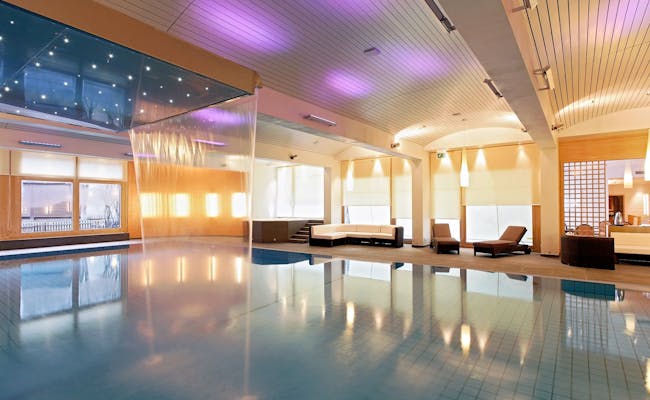 Entspanne in einem Spa, wenn es draussen regnet (Foto: Grand Hotel Zermatterhof)
Entspanne in einem Spa, wenn es draussen regnet (Foto: Grand Hotel Zermatterhof)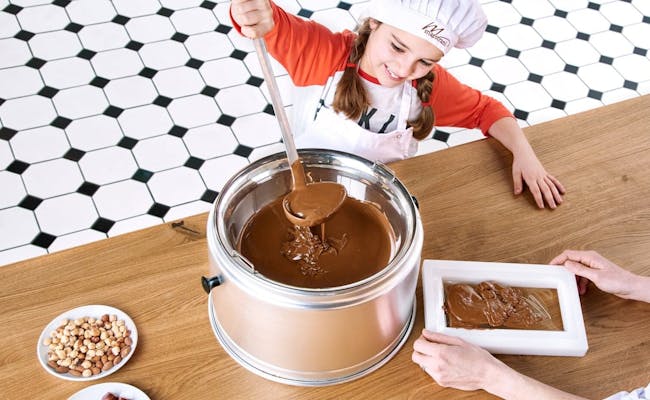 Besuche eine Schokoladenfabrik bei schlechtem Wetter (Foto: Chocolarium)
Besuche eine Schokoladenfabrik bei schlechtem Wetter (Foto: Chocolarium)Nature Switzerland
Apart from water and mountains, Switzerland offers numerous other natural beauties. One of these is the UNESCO World Heritage Site in Lavaux. More than 800 hectares line up north of Lake Geneva and form the largest contiguous wine-growing area in Switzerland. In addition, there are numerous nature parks, caves, gorges, grottos, bogs and swamps to be found, which always make for a varied visit.
Cities Switzerland
The diversity does not stop with the natural beauty, but continues in the cities. Busy cities such as Zurich, Geneva, Basel and Lugano shape the image of Switzerland just as much as baroque Solothurn, dreamy Locarno, much-visited Lucerne or cozy Schaffhausen
With La Chaux-de-Fonds and the federal city of Bern, two cities have made it onto the UNESCO World Heritage List. St. Gallen has also secured a place on this coveted list with its charming abbey district.
Not to be ignored are the countless small towns that exude an amazing amount of charm. The narrow streets of Stein am Rhein, Gruyère, Rapperswil or Appenzell let you forget the world around you for a moment and transport you into a fairy tale world.
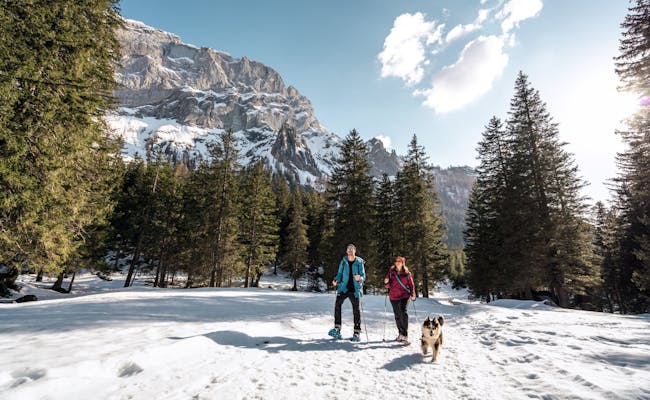 Schneeschuhwanderung mit dem Hund (Foto: Schweiz Tourismus André Meier)
Schneeschuhwanderung mit dem Hund (Foto: Schweiz Tourismus André Meier)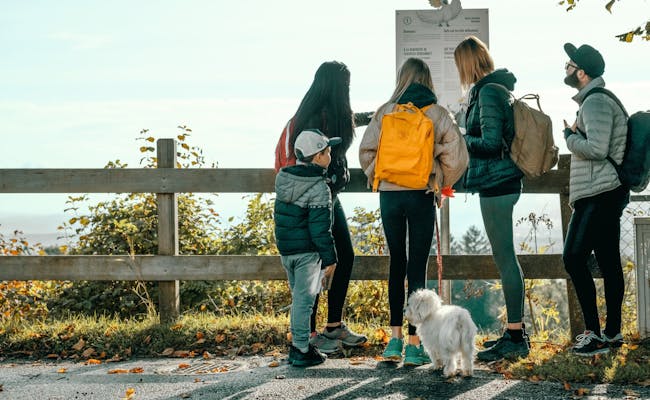 Wanderungen eignen sich perfekt mit dem Hund (Foto: Schweiz Tourismus Lorenz Richard)
Wanderungen eignen sich perfekt mit dem Hund (Foto: Schweiz Tourismus Lorenz Richard)Attractions Switzerland
The choice of attractions is extremely diverse in this small country. With over 1000 museums nationwide, a remarkable breadth of scientific, cultural, artistic and other topics is covered. Be it the Technorama in Winterthur, the Museum of Communication in Bern, the Swissminiatur in Melide, the Swiss Museum of Transport in Lucerne or the numerous natural history or art museums.
On the culinary side, chocolate factories, show dairies, wineries and breweries adorn the landscape. And if you like castles, you'll get your money's worth in Switzerland, too. Chateau Chillon](https://www.swissactivities.com/en-ch/lake-geneva-region/montreux/chillon-castle/) on Lake Geneva is a must-see if you're in the region, and a wide range of castles await you, especially in the canton of Aargau.
A popular attraction that is not in Switzerland but can easily be visited in a day trip from Switzerland is the Europapark in Germany. This amusement park leaves nothing to be desired in terms of roller coasters and the newly opened water world "Rulantica" is a dream for water rats.
 Canyoning ist eine beliebte Outdoor Aktivität in der Schweiz (Foto: Swiss River Adventures)
Canyoning ist eine beliebte Outdoor Aktivität in der Schweiz (Foto: Swiss River Adventures)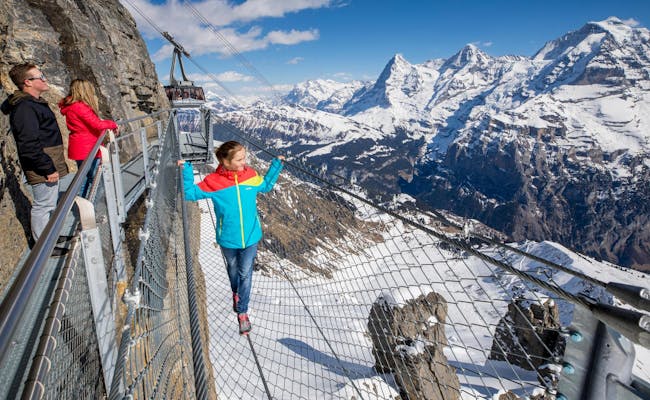 Vom Thrill Walk in Birg unter dem Schilthorn ist die Aussicht einmalig (Foto: Schilthornbahn)
Vom Thrill Walk in Birg unter dem Schilthorn ist die Aussicht einmalig (Foto: Schilthornbahn)Culture and History Switzerland
The first traces of human settlement in Switzerland can be traced back to the Paleolithic Age. But it is only with the end of the last ice age that a larger number of sedentary people is detectable in Switzerland. They have left their traces in the almost 60 discovered sites of prehistoric lake dwellings in Swiss lake landscapes. Today, these are part of the UNESCO World Cultural Heritage. On Lake Zug in the canton of Zug alone, there are remains of around 50 settlements.
After settlement by some Celtic tribes, the Helvetians in the Swiss Plateau and the Raetians in eastern Switzerland being among the best known, the Romans also extended their empire over Switzerland and Romanized the population.
After the Romans came the Franks, then the Swabians, the Burgundians and the Alemanni. As early as the 13th century, a 1st Confederation was formed from the original cantons of Uri, Schwyz and Unterwalden, which had united to protect their freedoms.
The Rütli Oath - Founding of Today's Switzerland
The founding date is considered to be August 1, 1291, which is why August 1 was designated as Switzerland's national holiday. The letter of alliance issued at that time as a founding document is kept in the Bundesbriefmuseum in the municipality of Schwyz.
After the end of the so-called Sonderbundeskrieg and with the Federal Constitution of 1848, Switzerland began its rise to a modern federal state, which today is one of the 20 largest economies in the world.
The Swiss Confederation is characterized by direct democracy, a high degree of regional and local autonomy, special participation of the population in joint decision-making, and the principle of self-imposed neutrality. The government consists of a Federal Council with seven Federal Councillors, headed by a Federal President. The office of president changes every year, which means that a different federal councilor always takes office.
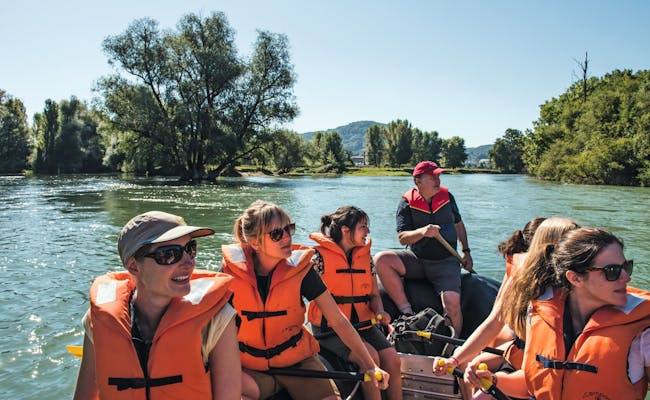 Böötle auf der Aare (Foto: Schweiz Tourismus André Meier)
Böötle auf der Aare (Foto: Schweiz Tourismus André Meier)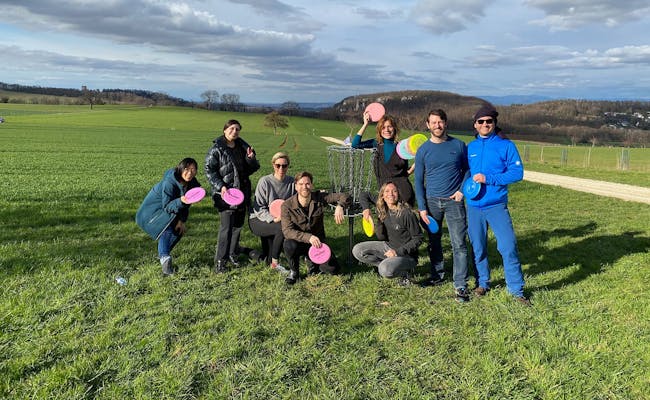 Eine Runde Disc Golf macht Spass im Team (Foto: Lila Disc Golf)
Eine Runde Disc Golf macht Spass im Team (Foto: Lila Disc Golf)Customs Switzerland
Many customs have a long history behind them and it is hard to imagine Switzerland without them. Starting with alphorn blowing, through the story of Heidi and ending with flag-waving. Traditions are deeply rooted in Switzerland and often have a strong regional connection. While in some cantons the carnival is an important folk festival, in other cantons the alpine procession or yodeling are strongly celebrated.
Music Festivals Switzerland
The Swiss Top Events list includes festivals of all musical genres every year. The Lucerne Festival, for example, falls into the classical music category. The annual jazz festival in Montreux should also not go unmentioned here.
One of the oldest festivals in Switzerland is the Open Air St. Gallen, which takes place every last weekend in June. Zurich's Street Parade, the world's largest open-air techno party, also attracts millions of visitors. In addition, traditional Swiss festivals featuring typical Alpine folk music are an important part of the Swiss events calendar.
Folklore evenings, alphorn concerts, shepherd festivals and alpine processions take place in the rural regions of Switzerland. If you like disguises and loud music, you should come at the time of Fasnacht. Then, from Ash Wednesday, the streets and alleys are celebrated with carnival parades and Guggen music.
Languages Switzerland
As for the languages in Switzerland, there is no typical Swiss dialect. There are four official languages and each village and valley seems to have its own dialect.
While the west on the border with France is assigned to the French language area, in the south on the border with Italy it is the Italian language and in a few small areas in the southeast it is the Rhaeto-Romanic language.
Most of Switzerland, about 17 cantons, use German as their official language. Some cantons are also bilingual or multilingual. However, Swiss German cannot be compared to "pure" German. The dialects sometimes deviate strongly from written German, so that the northern neighbors hardly understand the Swiss, or not at all.
To illustrate the diversity of languages: In German-speaking Switzerland alone, there are 5 different expressions for ordering a small 0.3 beer - Becher, Chübeli, Kleines, Rugeli or Stange.
Things to do in Switzerland with a stroller
Planning a family trip in Switzerland suitable for strollers can be a bit of a challenge. That's why we've done the research for you and categorised all our activities that you can do with a stroller. On this page, you'll find a selection of things to do with a stroller to help you plan a day out with your family. You'll be amazed at the variety of options available. Not only can you travel to a mountain peak with most mountain railways, but activities such as Urban Golf, city tours, Escape Games, or even Tuk Tuk tours (if the stroller is foldable) are on the agenda.
 Auf dem Schiff kannst du den Kinderwagen mitnehmen (Foto: CGN SA)
Auf dem Schiff kannst du den Kinderwagen mitnehmen (Foto: CGN SA)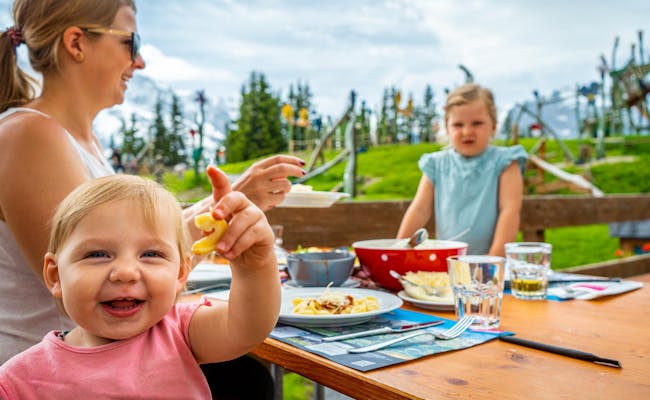 Ebenso auf viele Ausflugsziele in den Bergen (Foto: Schilthornbahn)
Ebenso auf viele Ausflugsziele in den Bergen (Foto: Schilthornbahn)Things to do in Switzerland with a wheelchair
A plethora of destinations in Switzerland are accessible and therefore suitable for wheelchairs. This means no one has to miss out on fun activities. Even special adventures such as paragliding, Urban Golf, and fishing are possible. Along with all the other "classics" like city tours, trips to a mountain peak or scenic boat rides, of course.
You’ll find all activities that are marked with the attribute "wheelchair" bundled up on our things to do with a wheelchair page. By the way, a collection of obstacle-free hiking trails can be found in this overview by Schweiz Mobil.
 Reise mit dem Rollstuhl durch die Schweiz (Foto: Schweiz Tourismus Dominik Baur)
Reise mit dem Rollstuhl durch die Schweiz (Foto: Schweiz Tourismus Dominik Baur) Sogar Gleitschirmfliegen ist möglich mit dem Rollstuhl (Foto: Flug Taxi)
Sogar Gleitschirmfliegen ist möglich mit dem Rollstuhl (Foto: Flug Taxi)Ideas for a children’s birthday in Switzerland
It's the highlight of the year for (almost) every child. Their birthday! If you're looking for a unique idea for the next children's birthday, we've got the inspiration you need. From visiting a chocolate factory, a Monstertrotti descent, a hike with cuddly alpacas to a muffin baking course, we've got it all. Be inspired by our ideas for a children's birthday and plan a memorable experience for your child.
